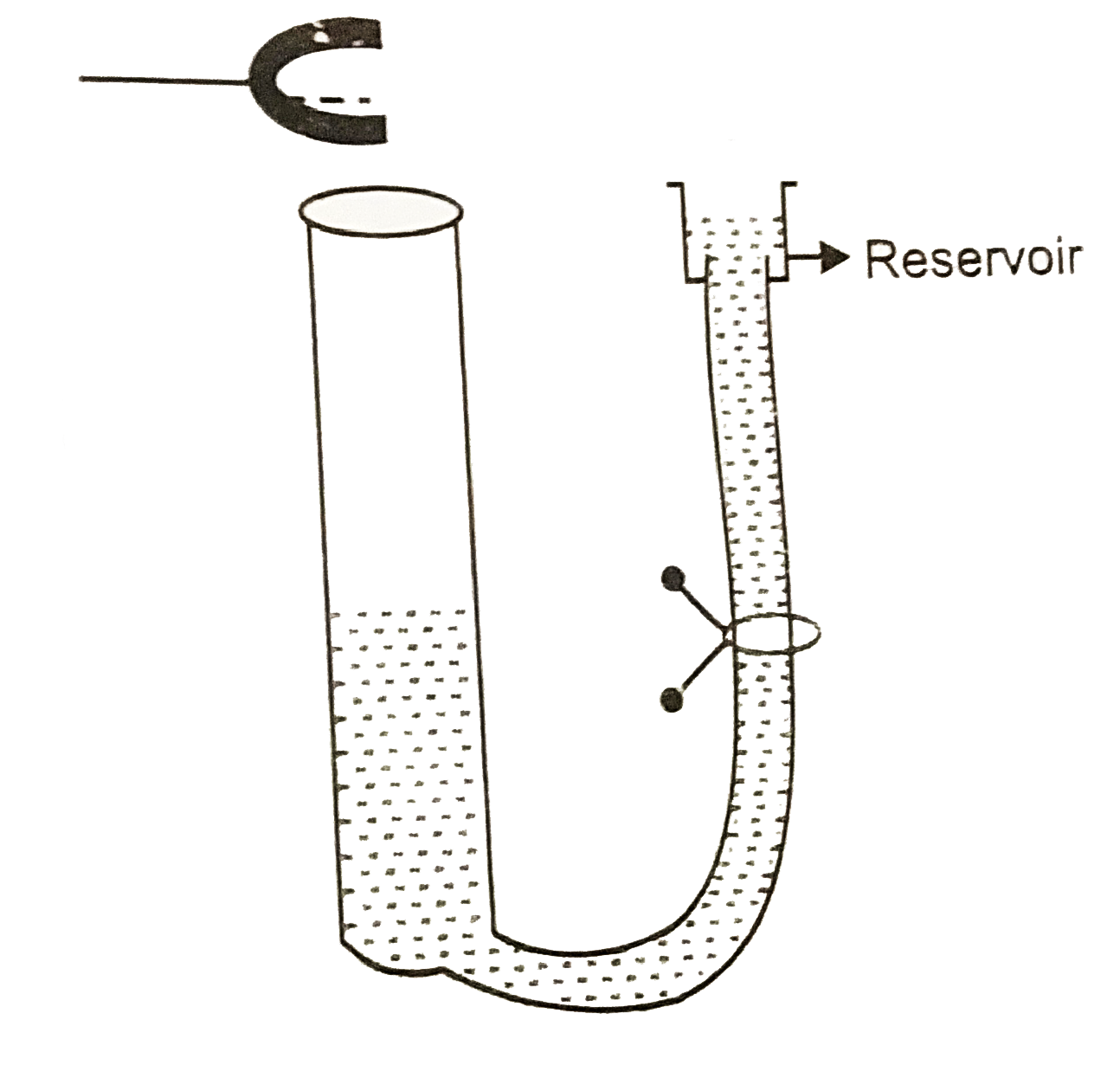A tuning fork vibrating with a frequency of 500 Hz is kept close to the open end of a tube filled with water, as shown in figure. The water level in the tube is gradually lowered When the water level is 17 cm below the open to open end, maximum intensity of sound is heard. If the room temperature is 20∘ C, the speed of sound in air at the temperature is

1. 330ms−1
2. 340ms−1
3. 350ms−1
4. 360ms−1
The correct Answer is:B
Here, υ=500Hz,L=17cm=17×10−2m
as υ=v4L
∴v=υ(4L)=(500s−1)(4×17×10−2m)=340ms−1
Topper's Solved these Questions
- WAVESBOOK - NCERT FINGERTPS ENGLISHCHAPTER - WAVESEXERCISE - HOTS
8 Videos
- WAVESBOOK - NCERT FINGERTPS ENGLISHCHAPTER - WAVESEXERCISE - EXEMPLER
10 Videos
- UNITS AND MEASUREMENTSBOOK - NCERT FINGERTPS ENGLISHCHAPTER - UNITS AND MEASUREMENTSEXERCISE - Assertion And Reason
15 Videos
- WORK , ENERGY AND POWERBOOK - NCERT FINGERTPS ENGLISHCHAPTER - WORK , ENERGY AND POWEREXERCISE - Assertion And Reason
15 Videos
Similar Questions
A tuning fork vibrating with a frequency of 512 Hz is kept close to the open end of a tube filled with water , figure. The water level in the tube is gradually lowerd. When the water level is 17cm below the open end, maximum intensity of sound in heard. If the room temperature is 20∘C, calculate
(a) speed of sound in air at room temperature.
(b) speed of sound in air at 0∘C
(c) if the water in the tube is replaced with mercury, will there be any difference in your observations?

View SolutionA vibrating tuning fork is placed over the mouth of a burette filled with water. The tap is opened and the water level gradually falls.
What do you observe ? Name the phenomenon. When does it happen?
View Solution
Knowledge Check
A tuning fork of frequency 440 Hz resonates with a tube closed at one end of length 18 cm and diameter 5 cm in fundamental mode. The velocity of sound in air is
A1. 336ms−1B2. 343ms−1C3. 300ms−1D4. 350ms−1
An excited tuning fork of frequency 512 Hz is held over the open end of a tall jar and water is slowly poured into it. Resonance was first observed at a level and then at a higher level. Calculate the difference in heights of the two levels. Velocity of sound in air at the time of experiment is 346 m/s.
View SolutionA tuning fork whose natural frequency is 440HZ is placed just above the open end of a tube that contains water. The water is slowly drained from the tube while the tuning fork remains in place and is kapt vibrating. The sound is found to be echanced when the air column is 60cm long and when it is 100cm long . Find the speed of sound in air.
View SolutionA tuning fork of frequency n is held near the open end of tube, the tube is adjusted until resonance occurs. If the two shortest lengths to produce resonance are L1andL2 , then the speed of the sound is
View SolutionWater rises to a height h in a capillary tube lowered vertically into water to a depth l as shown in the figure. The lower end of the tube is now closed, the tube is the taken out of the water and opened again. The length of the water column remaining in the tube will be
 .
.
View SolutionA closed organ pipe can vibrate at a minimum frequency of 500 Hz. Find the length of the tube. Speed of sound in air =340ms−1.
View SolutionA long cylindrical tube carries a highly polished piston and has a side opening . A tuning fork of frequency n is sounded at the open end of the tube . The intensity of the sounded heard by the listener changes if the piston is moved in or out. At a particular position of the piston he hears a maximum sound . When the piston is moved through a distance of 9cm, the intensity of sound becomes minimum. If the speed of sound is 360m/s, the value of n is

View SolutionThe lower end of a capillary tube is immersed in mercury. The level of mercury in the tube is found to be 2 cm below the outer level. If the same tube is immersed in water, up to what height will the water rise in the capillary ?
View Solution
